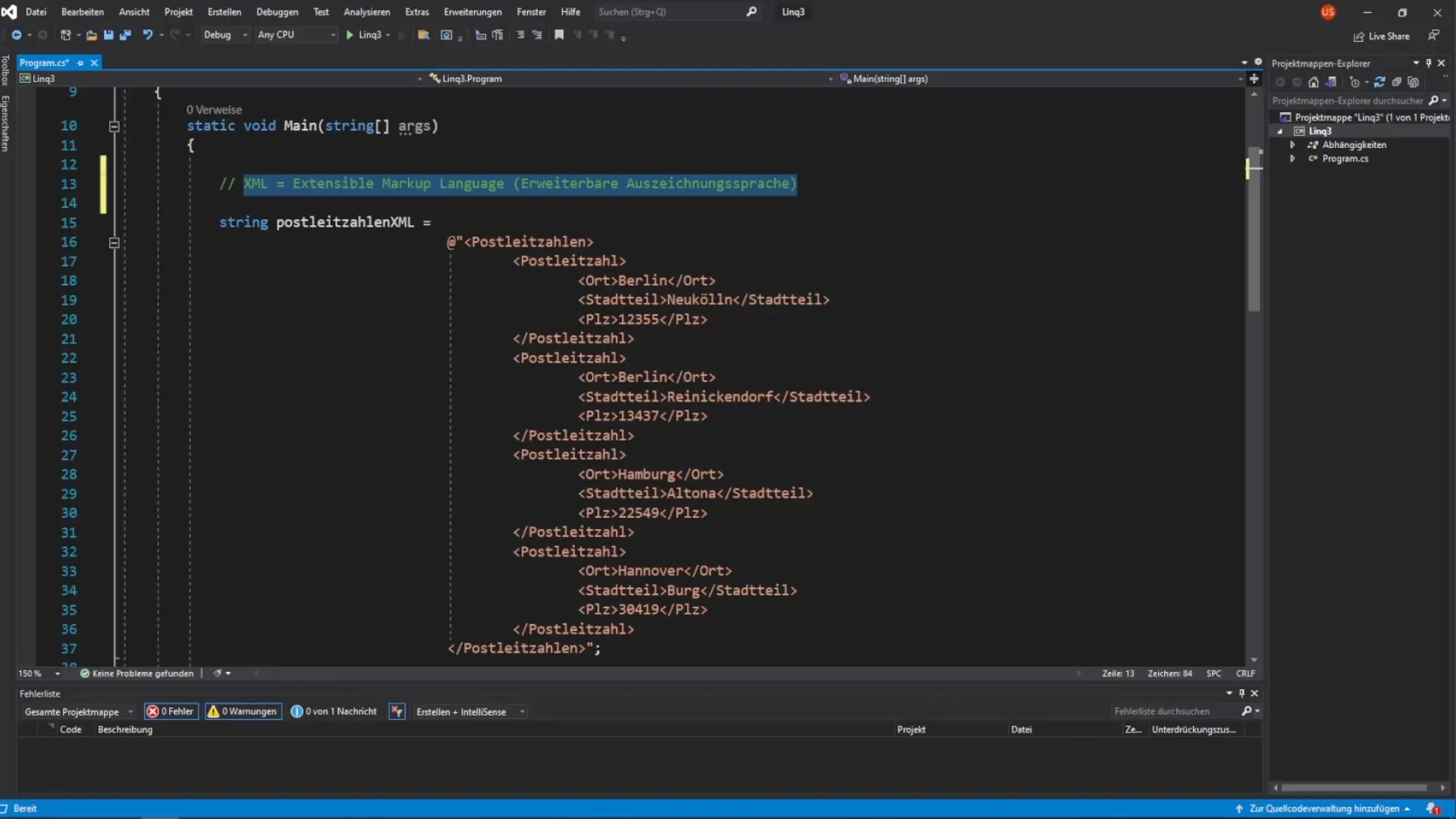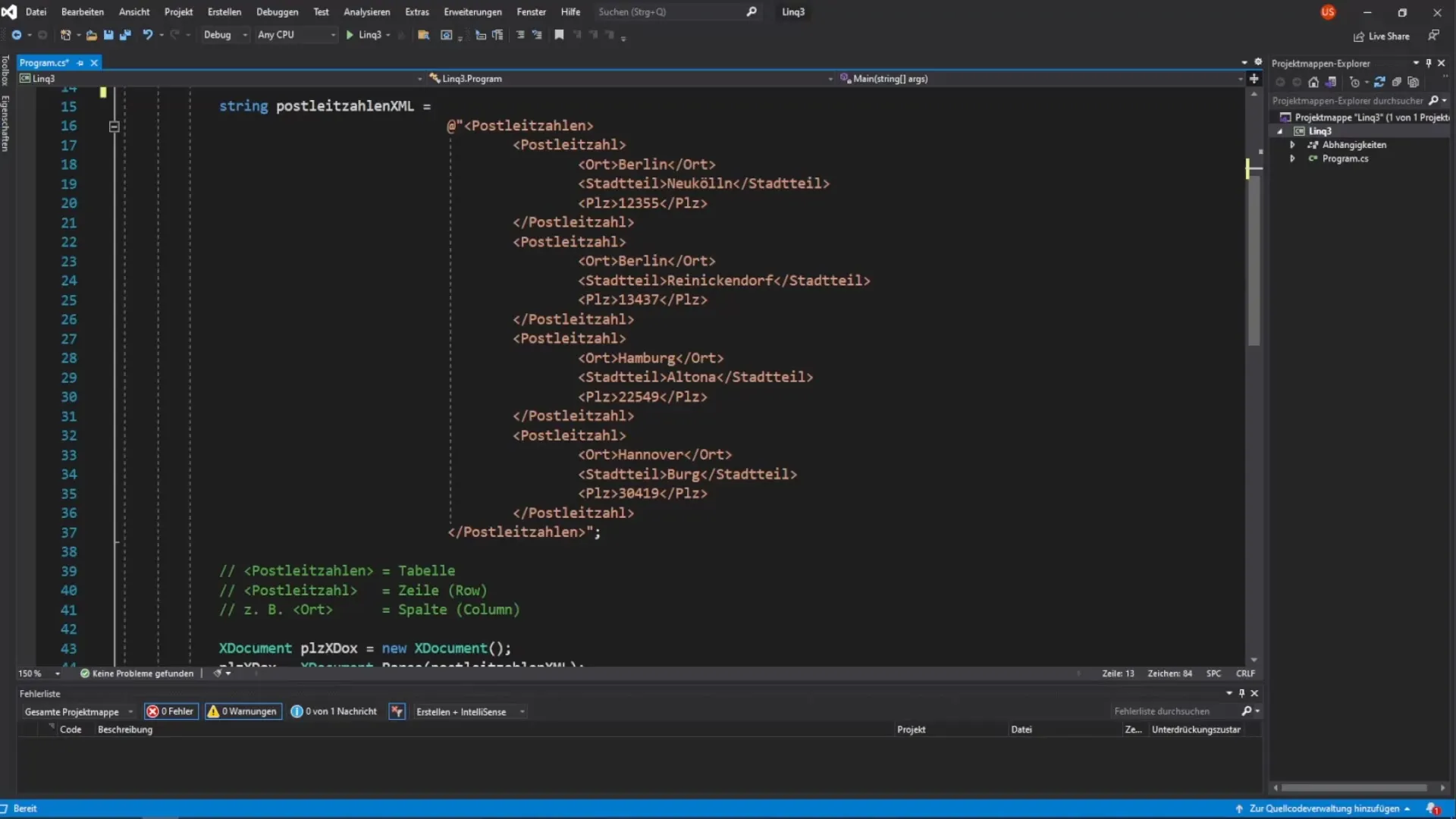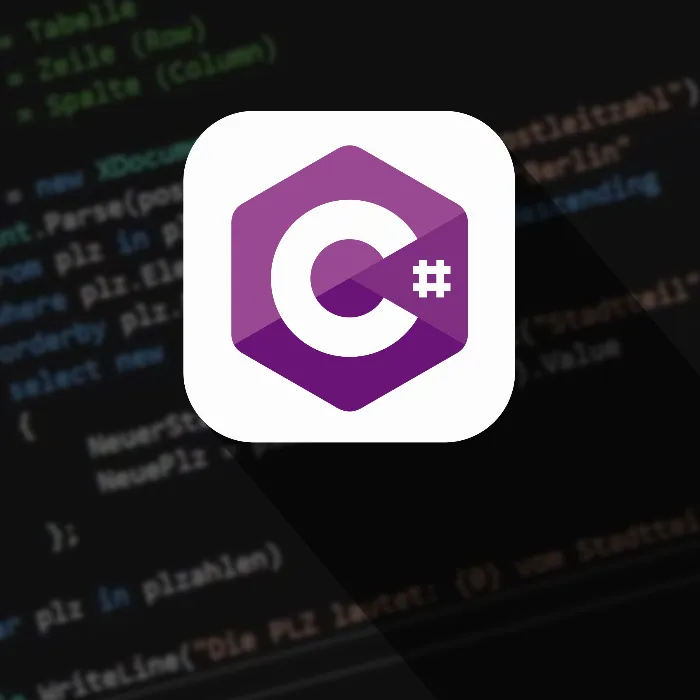XML stands for Extensible Markup Language and is a widely used data format that is used for the structured storage of information, whether for address books, weather data, or other collections of data. In this guide, I will show you how to effectively process XML files in C# using LINQ (Language Integrated Query). We will address the processing, sorting, and filtering of XML data step by step.
Main Insights
- XML is ideal for structured data storage.
- LINQ enables efficient querying and manipulation of XML data.
- You can filter and sort results with LINQ based on specific criteria.
- The combination of XML and LINQ improves the readability and handling of data in C#.
Reading and Preparing XML Data
To work with XML data, you first need the appropriate namespaces. These are crucial for reading and processing the XML data.
First, we add the required namespaces:

The central class we will use is the XDocument. It represents an XML document that allows us to easily process our XML data. In our example, we will create an instance of this class to initiate an XML document.
Instantiating the XDocument
In the next step, you create an XDocument instance that reads your XML data. We will refer to this instance as plzxdoc.
With the Parse command, you fill the object with your XML string. This step is essential because it allows you to store and manipulate the XML data in your variable plzxdoc.
Performing LINQ Queries on XML Data
After you have loaded your XML document, the important query follows. LINQ allows you to easily filter specific data. For our example, we will use LINQ to XML to filter all postal codes.
Preparing the LINQ Query
This query goes through all elements of the XML document that represent a postal code and filters them by the location "Berlin." As a result, you will receive only the postal codes that meet this condition.
Sorting the Results
With LINQ, you can also sort the filtered results.

Here, the postal codes are sorted in descending order, so the higher postal codes are displayed first.
Outputting the Results
Now that you have the filtered and sorted postal codes, it's time to output them to the console or in a user interface.
ForEach Loop for Output
With this loop, you access the values of the district as well as the postal code and output them formatted on the console.
Summary – LINQ Programming with XML Data in C
In this guide, you learned how to read, filter, and output XML data in C# using LINQ. You started by learning the fundamentals of XML and LINQ, incorporating the appropriate namespaces. Then, you created an XDocument instance and used a LINQ query to process the data. Finally, you sorted the filtered data and output it to the console.
Frequently Asked Questions
What is XML?XML stands for Extensible Markup Language and is used to store data in a structured way.
What does LINQ mean?LINQ is a query-integrated language in.NET that allows querying and manipulating data in a declarative way.
How do I filter XML data with LINQ?You can filter XML data with a LINQ query by specifying conditions for the desired elements and attributes, e.g., where (string)plz.Element("Ort") == "Berlin".
How do I sort results with LINQ?Results can be sorted using the OrderBy or OrderByDescending method by specifying the desired properties you want to sort by.


